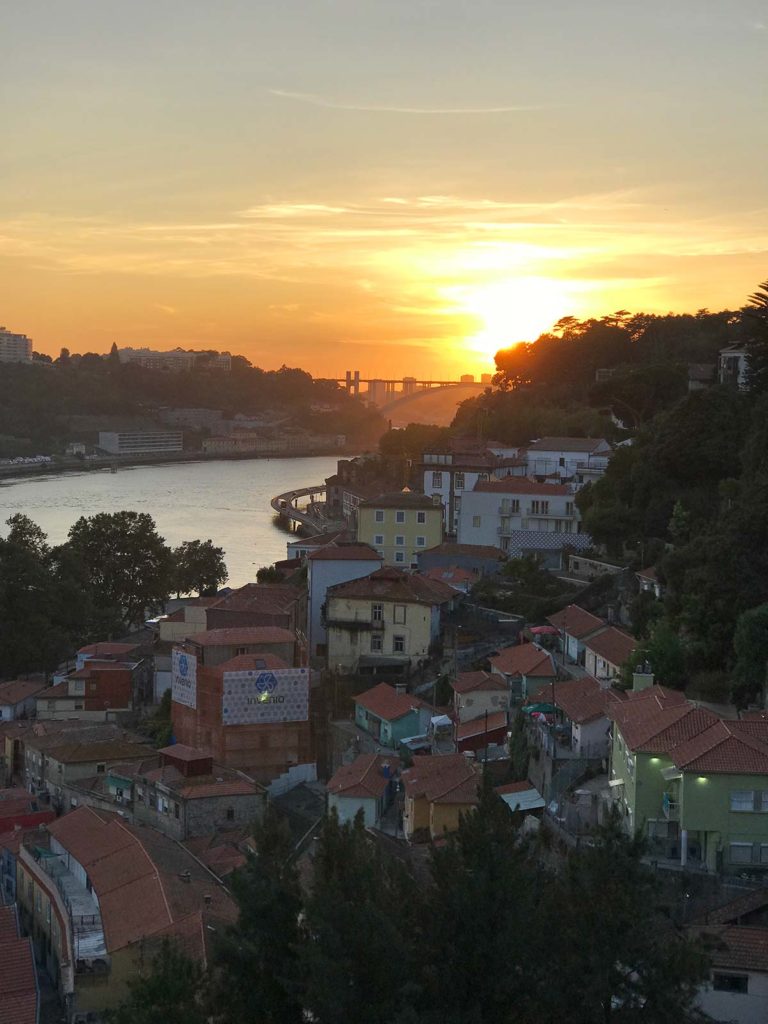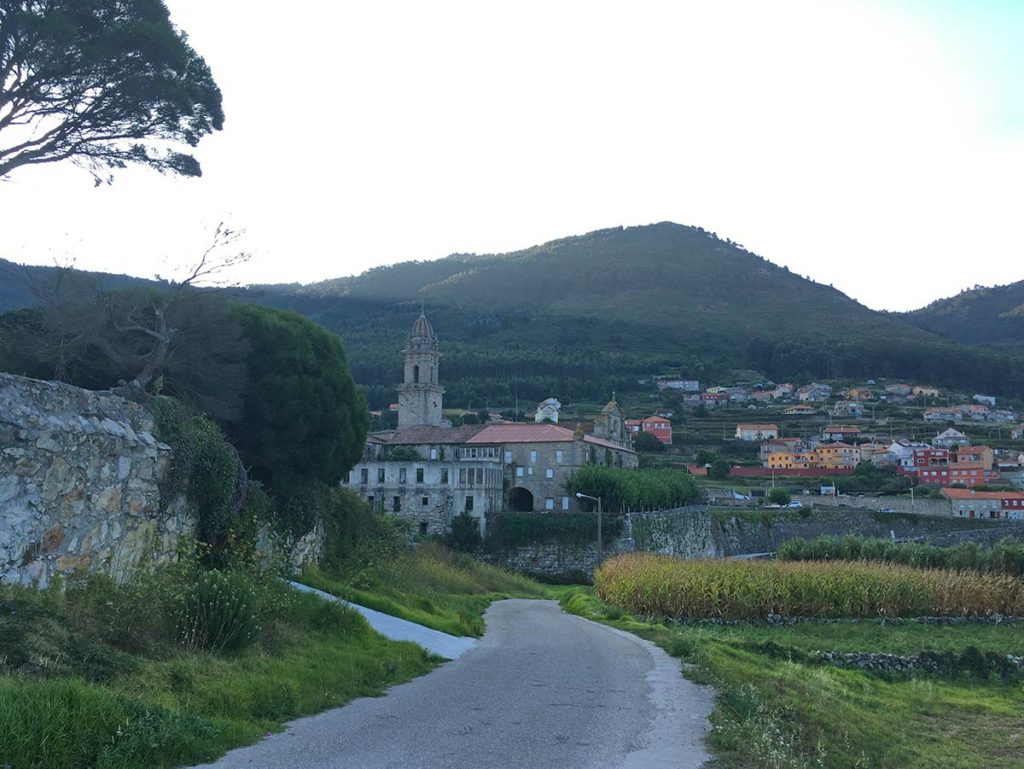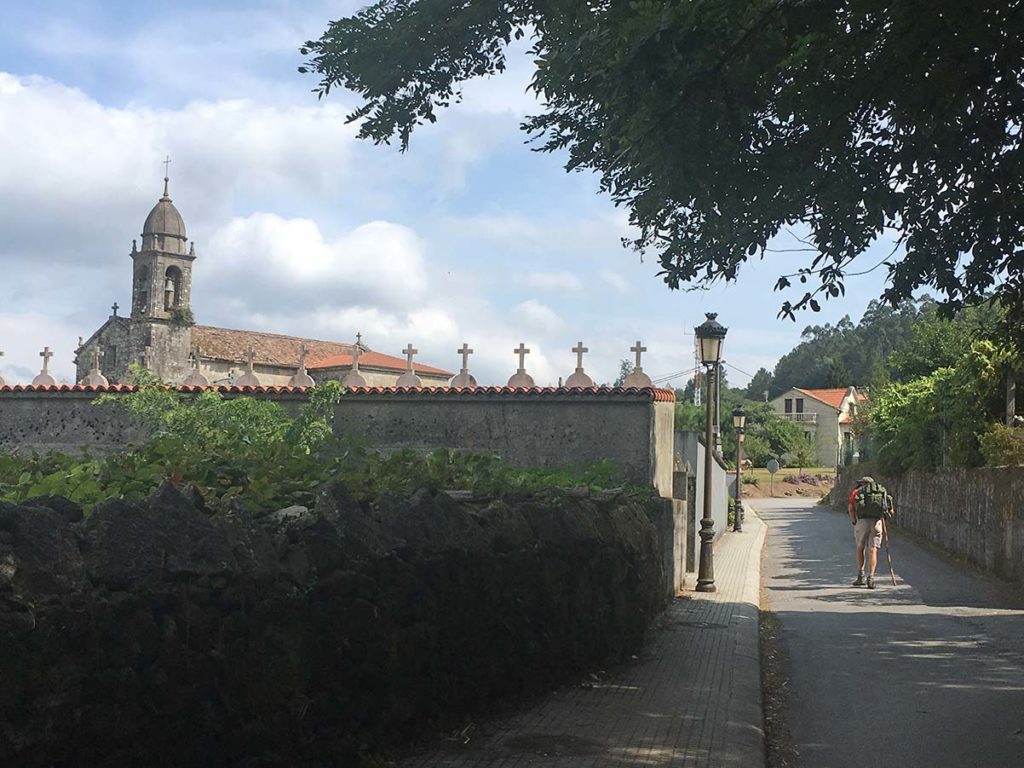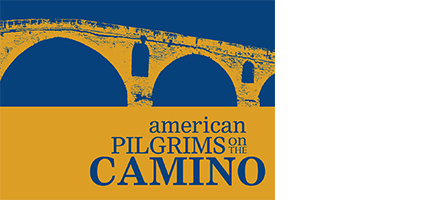Camino Route Overviews: Camino Portugués
Are you considering the Camino Portugués? This overview for the popular route will give you some information on where it starts (and ends), routing options, distances, key towns, when to go and some tips on how to get there.

About the Camino Portugués
The Camino Portugués has a long history and was traveled by Isabel, Queen of Portugal from 1271 to 1336. The route is interesting because it’s part of the connecting path between Santiago and Fatima, two important Catholic shrines.
The route itself follows the Atlantic coast from central and northern Portugal into Spanish Galicia. The route runs 608 kilometers from Lisbon or 233 kilometers from Porto to Santiago de Compostela. The Portugués transits notable towns like Coimbra, Santarem, Tomar, Porto, Ponte de Lima, Tui and Pontevedra.
Interesting Things to See on the Portugués
UNESCO world heritage sites along the Camino Portugués include Tomar, the University of Coimbra (and its lovely library), and the historic center of Porto. Other notable stops include Barcelos, Ponte de Lima, Pontevedra, the monasteries of Poio and Armenteira, and Padrón.

Popular Starting Points on the Camino Portugués
According to the Pilgrim’s Office in Santiago de Compostela, the Camino Portugués is the second-most popular Camino, after the Francés. And 34% of pilgrims earning a Compostela report having traveled either the Coastal or the Central route. Most pilgrims like it for the Portuguese food, forgiving terrain and the fact that starting in Porto makes the pilgrimage doable within a two-week vacation schedule.
By far, the most popular starting point is Porto. But folks also start in Lisbon, Vigo and Tui. At 118 km, Tui offers that 100 km sweet spot of a shorter route that earns a Compostela.
- Porto: 233 kilometers, 10-12 days
- Tui: 118 kilometers, 5-6 days
- Lisbon: 608 kilometers, 26-31 days
- Vigo: 98 kilometers, 4-5 days
And while those particular towns all have good transportation infrastructure, you can really start anywhere along the route.

Routing Alternatives
The Camino Portugués has several different route options for you to consider: the Coastal and the Central. The routes split in Porto and come back together again in Redondela, Spain. You can also do part of the Coastal route and then cut over to the Central route. The guidebooks and apps offer mapping and advice on how to do this.
The Coastal route is quieter and slightly longer than the Central. It goes through Vigo before reconnecting to the Central route. This route offers a variant called the Senda Litoral which hews even more closely to the coastline before joining the Coastal in Vila do Conde. Notable stops on the Coastal are the Viana do Castelo and the cute coastal town of Baiona.
The Central route goes through the interior countryside and is a bit more popular. Of note on this route are Barcelos, Ponte de Lima, Valença do Minho and Tui.
There is also the Variante Espiritual (Spiritual Variant). This option hangs a left after Pontevedra to follow the coastline before heading up the Rio Ulla river estuary. You have the option to walk the entire route or take a local boat for part of it. Either option will qualify you for a Compostela.

How to Get Onto the Camino Portugués
To Porto:
Porto (OPO) has nonstop flights from New York (Newark), Toronto and Montreal. It’s also served from many European cities, including most of Spain’s major airports. You can also use Lisbon as a gateway city and take a train or bus from there to Porto. There is also regular bus service between Santiago de Compostela and Porto (but book ahead as the buses fill up).
To Lisbon:
You can fly to Lisbon (LIS) from many North American gateways. There are also flights from numerous European airports, including Spanish ones.
To Tui:
The easiest routing is from Porto where you can catch frequent bus and train service to Tui.
If you want to use Madrid as your international gateway, fly to Vigo and take the train, or fly/train to Santiago de Compostela and catch the bus or train to Tui.
Comboios is the national train service for Portugal and Renfe is the train service for Spain. Flixbus and Alsa provide bus service (depending upon where you’re going). You can also use Google Maps, Rome2Rio, or aggregators such as Trainline or Omio to help you figure out logistics.

Camino Portugués Waymarking
The route is well waymarked although in a variety of styles. From the cathedral in Porto northward, the route is well marked with traditional yellow arrows. Some people report navigating out of Porto can be tricky.
Once in Tui, the familiar yellow arrows are plentiful and are supplemented by the kilometer posts of the Xunta de Galicia, which give directions and the distance to Santiago.
Along the Camino Portugués routes, one may sometimes spot blue arrows adjacent to or opposite the yellow waymarkers. These blue arrows mark the way for pilgrims traveling in the opposite direction to Fatima. The northernmost 50-60 kilometers in Portugal also have the red and white markings of the GR11-E9.
Terrain on the Camino Portugués
The route is mostly through agricultural land but is interspersed with pine and eucalyptus forests. Both variants have more hard surface walking than some other Camino routes. The Coastal offers a mix of forest and coastal views. The Central route is also more hilly, has more forest, farm lands and small villages. It also has more cobblestone surfaces.
From Lisbon, expect some longer stages, particularly for the first six days.
When to do the Camino Portugués
Portugal and Galicia naturally have a climate dictated by their proximity to the ocean and as such have changeable maritime weather. There is generous rainfall which at times can be prolonged and heavy. June, July and August are the months with the least rainfall but have a greater potential for hot, humid weather. May or September offer nice weather and are slightly busier than other months.
Accommodations & Services
From Lisbon, there are pilgrim albergues, but not at the kind of regular intervals that you’ll find once you get past Porto. From there, albergues and other kinds of lodgings are plentiful, allowing you to break up your stages to suit. Note that doing the Coastal in the summer months means that you may be competing with vacationers for non-albergue lodgings and planning ahead could be a good idea.
Towns with services are frequent. But stores and cafes can be closed for holidays and on Sunday, so it’s wise to keep your water topped up and carry snacks.
Our Camino albergue and lodging guide will give you information on what types of lodgings are available on the Camino, general pricing and advice on how to book.
Camino Portugués Guidebooks
The map image at the top of this page comes from this Google Map and it includes the primary GPX tracks. But it’s not designed to be your key resource. For more guidance, we recommend one of the resources below, or load in your own GPX tracks, available from the Spanish Federation.
There are numerous guidebooks on the Camino Portgués and all of the major apps cover it. Check out our guidebook and apps page for an exhaustive list.
The Xunta de Galician has good resources for notable historical sites for the Galician sections of the Coastal and the Central.
More Camino Resources
Request your pilgrim credential from us in advance of your Camino.
Be sure to check out our FAQs on planning your Camino and what to expect while on the trail. Or explore other Camino routes.
If you have more questions, be sure to join a local American Pilgrims chapter or join us in our Facebook group.
Rev 12/21/25

